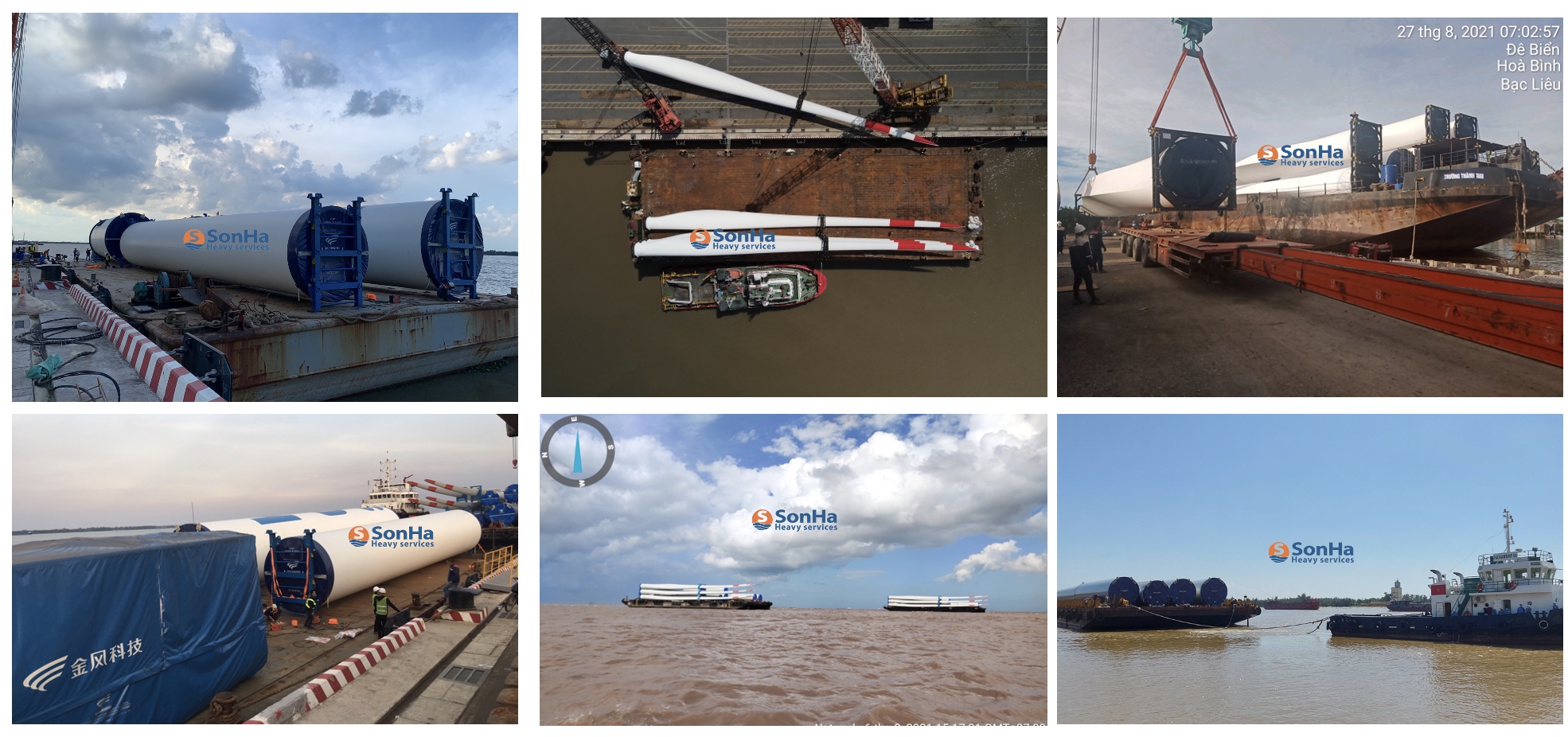The offshore wind turbine transportation plays a pivotal and extremely important role in the success of offshore wind projects. This importance is demonstrated through the following key aspects:
- Determining factor for project feasibility:
- Connecting global supply chains: Wind turbine components (blades, towers, nacelles, foundations) are often manufactured in different countries. Sea transport is the most efficient and economical method to move these oversized and overweight components to the installation site.
- Reducing logistics costs: Although initial transportation costs are high, compared to manufacturing all components on-site, sea transport helps optimize mass production and transportation costs, thereby reducing the project’s total investment.
- Ensuring construction progress and quality:
- Transporting specialized equipment: Offshore wind turbine installation requires specialized vessels (installation vessels, barges) capable of heavy loads and operating in harsh marine conditions. Safe and on-schedule transportation is a prerequisite for starting and completing the construction and installation phases.
- Equipment preservation: Wind turbine components are very large and sensitive. The sea transportation process must ensure absolute safety to avoid damage, which can cause serious delays and costly repairs or replacements.
- Optimizing the exploitation of wind energy potential:
- Accessing favorable locations: Sea transport allows access to and construction of wind farms in offshore areas, where wind speeds are stronger and more stable, thereby maximizing power generation.
- Large project scale: Thanks to the ability to transport the world’s largest capacity turbines, offshore wind projects can achieve a large scale, significantly contributing to renewable energy supply and national energy security.
- Promoting marine economic development:
- Developing seaport infrastructure: The offshore wind power industry drives the demand for specialized seaports for receiving, assembling, and transporting equipment, creating conditions for local economic development and the maritime service supply chain.
- Creating jobs and ancillary services: Transportation and logistics activities create many jobs in the maritime, engineering, maintenance, and supply chain management sectors.
With many years of experience in executing various projects, we are currently cooperating with close partners to provide the best solutions for the construction of transportation and installation packages for near-shore wind power projects in Vietnam.


